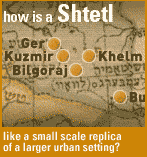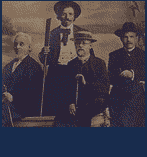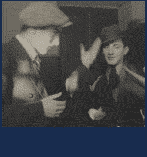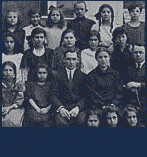

Polish Jews under Nazi Rule

The Jewish residents of Germany had been stripped of their basic human rights following the Nazi rise to power in 1933. First subject to humiliation and progressive exclusion from German economic, political, and cultural life, the Jews became pariahs in German society. Once the Nazis occupied western Poland in September 1939, Polish Jewish citizens there were marked for special persecution. They suffered a complete loss of their civil rights, which included being limited in the physical space they could inhabit. Beginning in November 1939, in the Nazi-occupied provinces of Poland, Jews were required to wear a yellow badge to identify them as Jews. Jewish males were conscripted for forced labor and any assets possessed by Jews were expropriated by the German authorities.


Over the course of 1940 and 1941, Jews in virtually all major Polish cities were herded into urban ghettos, which were sealed off from the surrounding population. The ghetto streets, wired and enclosed, were cramped with massive number of displaced families. They became scenes of mass death, as the impoverished Jewish population slowly died from malnourishment and disease. In June 1941, as Germany invaded the USSR, mobile killing squads called Einsatzgruppen  , which followed the invading Wehrmacht (German army), began the systematic extermination of Jews in eastern Poland and the western Russian provinces. At some point in 1941, the Nazi regime decided to expedite the process of Jewish extermination by employing more "efficient" methods of mass killing through special extermination camps, among which were Belzec, Chelmno, Majdanek, Treblinka, Sobibor, and Auschwitz. By the end of the World War II, three million Polish Jews (92% of the pre-war population) would be murdered.
, which followed the invading Wehrmacht (German army), began the systematic extermination of Jews in eastern Poland and the western Russian provinces. At some point in 1941, the Nazi regime decided to expedite the process of Jewish extermination by employing more "efficient" methods of mass killing through special extermination camps, among which were Belzec, Chelmno, Majdanek, Treblinka, Sobibor, and Auschwitz. By the end of the World War II, three million Polish Jews (92% of the pre-war population) would be murdered.
Jewish Culture During the Holocaust: Kiddush Ha-Chaim (Sanctifying Life)
Despite the Nazi effort to restrict Jewish existence in Poland, and to take away their dignity, Jews tried to continue with their lives as best they could. How did Jews live during the war years? Was there any room for actual 'living' when there was almost no food, no water, and no sanitation, and as they suffered from forced labor, no work, disease, death, and irrational killings? What could Jews, stripped of their citizenship, positions, possessions, connections, homes, friends, children, and parents, do during the years that this war lasted? Yet, despite the deadly blows, and reduced to the most basic forms of existence, Jews continued to embrace life, while resisting despair and the Nazi death sentence.
Resistance to the Nazis did not only mean armed self-defense; the choice to stand up against the Nazis, to embrace survival and refuse acceptance of the Nazi death sentence, both as individuals and for the Jewish people collectively, represented a choice to resist the imposed German fate. This choice to resist the Nazi regime was reflected in various forms of behavior: the smuggling of food into ghettos; self-sacrifice within the family to avoid starvation and death; setting up soup kitchens despite the minimal food available; organizing cultural, educational, religious, and political activities to strengthen morale; and the work of doctors, nurses, and teachers within the ghettos of Poland. These were all parts of maintaining the health and moral fiber of Jews individually and as a whole. Each of these acts, as well as the later choice to take up arms against the Nazis and their collaborators, constituted a form of resistance against the Nazis. Kiddush Ha-Chaim  , (the "Sanctification of Life") by Jews under Nazi rule signified the embrace of a survival ideology as a form of resistance. It showed an inner defiance that provided the physical strength required for active resistance. Jews tried in every way, and in every aspect of daily life, to survive until the Nazi tyrants could be vanquished.
, (the "Sanctification of Life") by Jews under Nazi rule signified the embrace of a survival ideology as a form of resistance. It showed an inner defiance that provided the physical strength required for active resistance. Jews tried in every way, and in every aspect of daily life, to survive until the Nazi tyrants could be vanquished.











